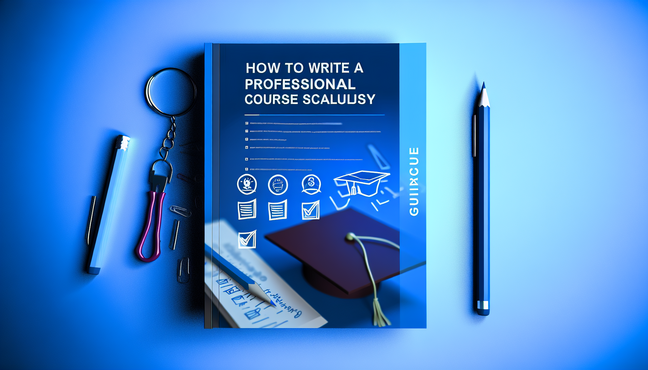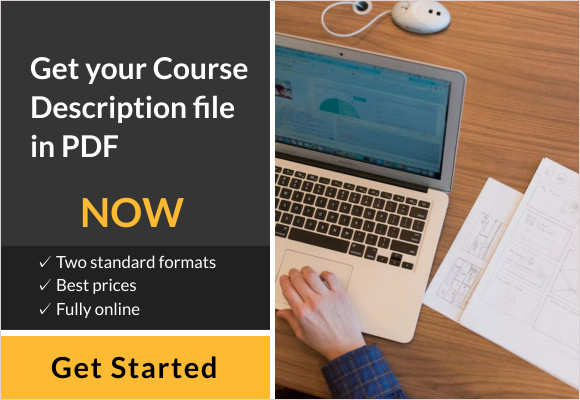Understanding the Purpose of a Course Syllabus
A course syllabus is essential for both instructors and students as it establishes a comprehensive framework for the course. It acts as a roadmap, detailing the course objectives, structure, and expectations, thus ensuring that everyone is aligned from day one. A well-structured syllabus clearly outlines the course topics, assignment schedules, grading criteria, and communication channels, creating a transparent environment that fosters success in the learning process.[Source: University of New Mexico]
For instructors, the syllabus provides a foundation for planning course content, pacing, and teaching strategies while allowing them to articulate their expectations rigorously. This standardization can also aid in maintaining academic integrity and consistency across different course sections. For students, having access to a syllabus helps them understand the workload, deadlines, and assessment methods, enabling better time management and preparation for assessments. Moreover, clear communication about policies—ranging from attendance to academic honesty—prevents misunderstandings and establishes a professional dynamic between instructors and students.
In conclusion, the course syllabus serves not only as a crucial tool for outlining the educational experience but also as a contract that facilitates effective communication and establishes a pathway for success within the academic environment. For further insights related to course syllabus importance and format, explore more on Course Description.
Key Components to Include in Your Syllabus
A well-structured syllabus serves as a roadmap for students, ensuring clarity and setting expectations for the academic journey. Here are the key components to include:
- Course Objectives: Clearly articulate the aims of the course, including skills and knowledge students are expected to acquire by the end. This section helps students understand the purpose of the course and its relevance to their academic and career goals.
- Required Materials: List all necessary materials, including textbooks, software, tools, and any additional resources. Providing complete information prevents confusion and ensures students are adequately prepared for each class.
- Weekly Schedule: Outline a detailed week-by-week breakdown of topics, readings, assignments, and exams. This helps students manage their time effectively and stay on track throughout the semester.
- Assessment Methods: Describe how students will be evaluated, including grading criteria for assignments, exams, projects, and any participation components. Transparency in assessment fosters a fair learning environment.
- Important Policies: Include crucial policies regarding attendance, late submissions, academic integrity, and disability accommodations. Clearly stating these policies helps maintain a constructive atmosphere and addresses potential issues upfront.
For further insights into creating an effective syllabus, you can refer to our detailed guide on creating an effective syllabus.
Crafting Clear and Concise Course Objectives
Effective course objectives are crucial for guiding both instructors and students toward successful learning outcomes. Utilizing the SMART criteria—Specific, Measurable, Achievable, Relevant, and Time-bound—can significantly enhance the clarity and efficacy of these objectives.
- Specific: Each objective should define a clear goal. Instead of stating a vague objective like “understand the material,” specify what students should be able to do, such as “analyze the key themes of Shakespeare’s plays.”
- Measurable: Quantifiable objectives allow both instructors and students to track progress. For example, “Students will complete five lab experiments and submit a report to document their findings,” provides a clear measurement of what students must achieve.
- Achievable: Objectives should be realistic and attainable. Consider the students’ current skills and knowledge. An appropriate objective for a beginner level might be, “Students will create a simple presentation using PowerPoint by the end of the course,” rather than expecting advanced design skills.
- Relevant: Ensure that course objectives align with broader learning goals. For instance, “Students will apply marketing principles to real-world case studies” relates directly to their future careers in marketing.
- Time-bound: Establishing a timeline creates urgency and focus. Objectives might state, “By the end of the semester, students will have developed a marketing plan for a local business.”
Incorporating SMART objectives not only enhances the learning experience but also provides structured expectations for assessment. This clarity is essential in aligning student learning with educational standards and institutional goals. For more insights on crafting educational objectives, consider exploring our article on Writing Effective Course Descriptions.
Structuring Your Syllabus for Easy Navigation
To ensure your syllabus is user-friendly and facilitates easy navigation for students, consider the following organizational strategies:
- Clear Structure: Begin with a table of contents that lists sections and page numbers, allowing students to quickly locate information. Each section should have a clear and descriptive heading, such as “Course Overview,” “Grading Policy,” and “Schedule of Assignments.”
- Consistent Formatting: Use consistent fonts, sizes, and spacing throughout the document. Bulleted lists or numbered items can make information digestible, especially for important policies or key dates.
- Visual Elements: Incorporate visuals like charts or infographics where applicable, particularly for schedules or sequences of assignments. This can enhance understanding and retention of information.
- Contact Information: Include a section at the beginning of the syllabus with your contact details, office hours, and preferred communication methods. This ensures students know how to reach you with questions.
- Accessibility Features: Ensure the syllabus is accessible to all students by using accessible file formats (e.g., PDF or HTML) and providing alternative text for images or charts. This aligns with universal design principles.
- Important Dates Highlighted: Consider a dedicated “Important Dates” section at the start of the syllabus, summarizing crucial deadlines and exam dates for quick reference.
- Resource Links: Include hyperlinks to additional resources, such as course platforms (like Course Description) and institutional support services, enhancing the syllabus with helpful navigational aids.
- Feedback Mechanism: Provide a way for students to give feedback on the syllabus and the course structure. This can foster a more interactive learning environment and help improve the syllabus for future classes.
By employing these strategies, you can create a syllabus that is not only comprehensive but also easy for students to navigate, ensuring that they can quickly find the information they need to succeed in your course.
Best Practices for Reviewing and Updating Your Syllabus
Regularly reviewing and updating your syllabus is crucial to ensure that course content remains relevant, engaging, and aligned with both institutional guidelines and student needs. Here are some effective strategies for this important task:
- Solicit Student Feedback: Gather insights from students regarding what aspects of the syllabus worked well and what could be improved. Strategies could include anonymous surveys or feedback forms at mid-semester to assess which topics resonate most with students and engage them effectively [Source: Teaching Commons].
- Incorporate Current Events and Trends: Update your syllabus to reflect new developments in your field. This not only enriches the learning experience but also showcases the relevance of course material. For example, if your subject includes technology, ensure your syllabus touches on the latest innovations or industry practices [Source: The Edvocate].
- Align with Learning Objectives: Regularly revisit your course’s learning objectives to ensure your syllabus is effectively designed to meet these goals. This alignment helps maintain focus on student outcomes and can streamline the teaching process [Source: USC].
- Integrate Diverse Learning Methods: As student learning styles evolve, it’s essential to update your syllabus to include a range of instructional methods and assessment techniques. For instance, incorporating multimedia resources or collaborative projects can cater to various learning preferences, thereby enhancing engagement [Source: Edutopia].
- Technical and Institutional Compliance: Ensure that your syllabus complies with any updated university policies or accreditation standards. This includes accessibility requirements, grading scales, or new educational technologies that have been adopted by the institution [Source: Inside Higher Ed].
- Schedule Regular Reviews: Establish a routine for syllabus review, perhaps annually or at the conclusion of each academic term, to systematically assess and incorporate lessons learned and feedback received. This proactive approach helps to continuously improve course quality and student satisfaction [Source: University of Oregon].
By incorporating these strategies, educators can create more dynamic, engaging, and effective syllabi that not only support student learning but also adapt to the ever-changing educational landscape. For more tips on syllabus creation and updates, you can visit our dedicated page on syllabus design here.
Sources
- Course Description – Course Overview
- Edutopia – Make Your Syllabus More Inclusive
- Inside Higher Ed – University Policies for Syllabi
- The Edvocate – Importance of a Course Syllabus
- University of New Mexico – Using the Syllabus
- USC – Learning Objectives
- University of Oregon – Enhancing Your Syllabus
- Teaching Commons – Importance of Feedback










